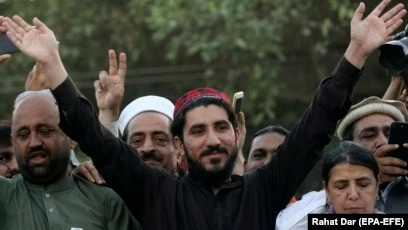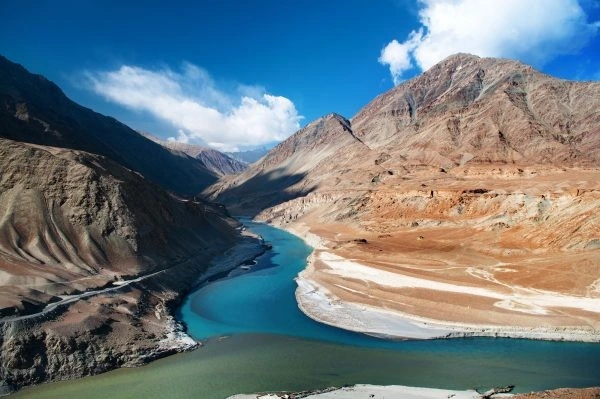Saudi Arabia’s New Era

Driven by a daring future vision, Saudi Arabia is undergoing an unparalleled metamorphosis. Long recognized for its enormous oil reserves and strong customs, the Kingdom is today at the junction of economic diversification and societal change. Vision 2030 is an ambitious road map the country is starting under Crown Prince Mohammed bin Salman. Saudi Arabia’s New Era This strategy framework seeks to diversify the nation’s economy, lower its reliance on oil, build public service sectors like health, education, infrastructure, recreation, and tourism, so diversifying the country. These developments’ scope and speed are transforming Saudi Arabia’s very fabric.
Saudi Arabia’s identity has always been intimately entwined with Islam and its responsibility for maintaining the two holiest sites in the religion, Mecca and Medina. It has kept a conservative cultural framework, with rigorous readings of Islamic law guiding daily life. Still, the previous several years have seen a striking change. Once unimaginable, social changes have been implemented. Women today are entitled to drive, travel alone, and actively engage in the public life and workforce. These days, mixed-gender gatherings are somewhat prevalent; cinemas have reopened, and cultural events are scheduled routinely. These changes point to a re-evaluation of conventional wisdom to match world standards and support a more inclusive society.
Economic diversification is a pillar of Vision 2030 that stands fundamental. Saudi Arabia’s economy was exposed to swings in world oil prices for decades since it was unduly dependent on oil exports. Understanding this, the government has started a range of projects aimed at boosting non-oil industry. Two initiatives the Kingdom is funding in sustainable businesses, environmental preservation, and technological innovation are the Saudi Green Initiative and the National Industrial Development and Logistics Program (NIDLP). Particularly solar and wind, renewable energy is becoming more and more important; big projects like NEOM, a futuristic mega-city run solely on pure energy, are attracting interest all around.
Reversing the economic scene has also been greatly aided by Saudi Arabia’s sovereign wealth fund, the Public Investment Fund (PIF). Investing in technology, entertainment, travel, infrastructure, and businesses, the PIF is helping small and medium-sized businesses as well as creating new sectors. It is leading the creation of giga-projects including Qiddiya (a large-scale entertainment city), the Red Sea Project (a premium tourism destination), and Amaala (a wellness-oriented resort), having investments in foreign businesses and staged major athletic events.
Previously underdeveloped, the industry of tourism is now seen as a main engine of economic development. With the introduction of a new e-visa system in 2019, Saudi Arabia opened its doors to foreign visitors, therefore breaking a historic limit from past policies. Using its rich legacy, archaeological sites, and natural surroundings, the Kingdom is drawing tourists from all over. Projects like Al-Ula, a UNESCO World Heritage site, have gotten significant funding to create environmentally friendly travel that accentuates Saudi Arabia’s historical depth and cultural diversity.
Notwithstanding these aggressive changes, problems still exist. Still a worry is unemployment, especially among young people. Although initiatives to raise Saudization, the employment of Saudi natives in many fields, have had some success, the private sector still finds it difficult to handle the rising job seeker count. Furthermore, even if the government has made significant progress toward gender equality, society attitudes and strongly rooted cultural norms could shift slowly. Long-term viability of these projects depends on bridging the difference between reform policies and grassroots acceptability.
Ensuring that economic reforms do not surpass the evolution of legal and institutional systems required for a modern economy presents even another major challenge. Attracting foreign capital and creating a competitive business environment relies on open government, legislative changes, and an independent court. The government has publicly focused on the battle against corruption; high-profile crackdowns show a dedication to openness, but sustained institutional reform is still very vital.
Geologically, Saudi Arabia keeps negotiating a challenging regional scene. Its performance of balancing acts between world powers like the United States, China, and Russia, as well as in regional conflicts and ties with surrounding nations, will determine the success of its own agenda. A major enabler of economic development is stability; hence Saudi Arabia’s foreign policy is progressively showing a pragmatic approach targeted toward long-term security and prosperity.
Culturally speaking, the Kingdom is having a rebirth. Once unthinkable in the Saudi environment, the General Entertainment Authority has enabled concerts, art exhibits, and worldwide cultural cooperation. Along with improving the cultural scene, this has given young people fresh job possibilities. Slowly expanding creative sectors including music, fashion, and movies give the national identity vitality.
Saudi Arabia is ultimately in a turning point in its history. Vision 2030 marks a dramatic break from the status quo with its broad social and financial changes. Although the road ahead is difficult, reform is clearly something that must be done. Resilient government, social consensus, and inclusive development will determine if these changes succeed. The Kingdom is showing how a country may strike a balance between history and modernity, therefore creating a future that celebrates its past while nevertheless embracing the opportunities of the present.












